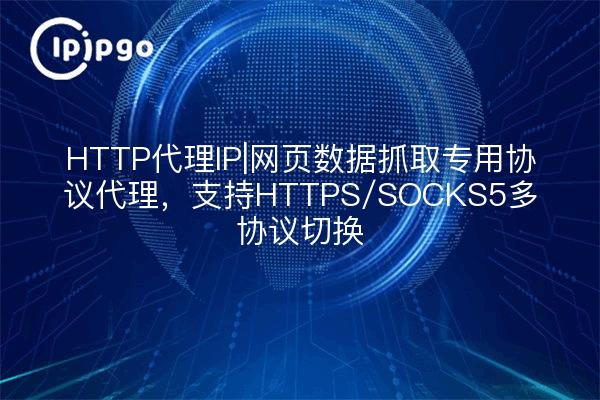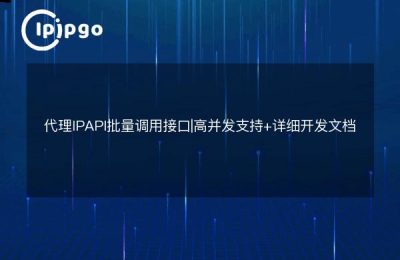
HTTP proxy IP core role and use scenarios
In the process of web page data crawling, many friends have encountered the problem of access frequency limitation and IP blocking. At this timeHTTP proxy IPIt's like a smart staging area, allowing each request to be initiated through a different network address. For example, using ipipgo's residential proxy IP, each visit will appear as a normal home network environment, dramatically reducing the probability of being recognized as a crawler.
In the real case, an e-commerce price monitoring system has successfully increased the collection success rate from 43% to 98% by using ipipgo's dynamic residential IPs. especially for collection tasks that need to run for a long time, it is recommended that you choose a system that supports theHTTPS/SOCKS5 protocol automatic switchingproxy service, so that you can respond flexibly when encountering the security policies of different websites.
How to choose a multi-protocol agent? Remember these 3 key points
The market is a mixed bag of agency service providers, so focus on that when picking one:
| Survey Dimension | Qualifying standards |
|---|---|
| Protocol coverage | Simultaneous support for HTTP/HTTPS/SOCKS5 |
| IP purity | Residential IP share > 90% |
| connection method | Provides both API and configuration file access |
Take ipipgo, for example, with its90 Million Real Residential IP Resource LibraryWith intelligent protocol adaptation technology, it can automatically match the most suitable communication protocol for the target website. When detecting the target server forced HTTPS connection, the system will complete the protocol switch within 0.3 seconds, the whole process without human intervention.
Three steps to complete the proxy configuration (with code examples)
Here is an example of a Python crawler to demonstrate the configuration process:
import requests
proxies = {
'http': 'http://username:password@gateway.ipipgo.com:端口',
'https': 'socks5://username:password@gateway.ipipgo.com:端口'
}
response = requests.get('destination URL', proxies=proxies)
The key thing to keep in mindCorrespondence between protocol types and ports. It is recommended to first create the ipipgo console in theMulti-Protocol Channel GroupsThe system automatically generates an access address with protocol identification. When encountering complex situations, you can enable intelligent routing mode to let the system automatically select the optimal protocol and exit node.
Dynamic static IP selection strategy
Each of the two types has its own applicable scenarios:
- Dynamic Residential IP: Ideal for scenarios that require high-frequency IP changes, such as social media data collection
- Static Residential IP: Ideal for scenarios that require session continuity, such as e-commerce price comparison monitoring.
ipipgo's.hybrid IP pool modelIt is a compromise solution to set the IP retention length (1 minute-24 hours). For example, setting a 30-minute retention period ensures that short-term sessions do not drop out, but also allows you to change IPs periodically to avoid accumulating access logs.
Frequently Asked Questions QA
Q: What should I do if protocol switching fails?
A:Check if the port matches the protocol (8080 for HTTP, 1080 for SOCKS5), it is recommended to use the protocol auto-sniffing function provided by ipipgo.
Q: What do I do if I encounter CAPTCHA validation?
A: Prioritize the use of high stash proxy, ipipgo's residential IP pool comes with a browser fingerprint camouflage function, with a reasonable request interval settings (recommended ≥ 5 seconds)
Q: How do I test if the proxy is working?
A: Access provided by ipipgoIP Detection Interface, the return information will contain the currently used egress IP and protocol type.
Special care should be taken when choosing agency servicesSuccess rate of requestsrespond in singingresponsivenessThese two hard indicators. After testing, ipipgo's request success rate in Europe and the United States reached 99.2%, and the average response time of Asian nodes was <180ms, which is crucial for projects that require real-time data crawling.








